BenCab continued
Although I’m still away in the bush, I have had time to do a little more research on BenCab. You have now seen some of his work but there is more to say about this remarkable artist and his creative works. The Subscriber R of the Philippines has met BenCab and spent time at his museum speaking with him. As R says, BenCab the man is as impressive a human as an artist.
We have reviewed some of BenCab’s Sabel series in the previous post so today we will look at his less abstracted works, some of which belong to his Larawan series, larawan being the Filipino word for portrait or picture.
The Oriental Fan (Larawan Series) created in 1982 is an acrylic and collage on paper (57 cm x 77 cm).
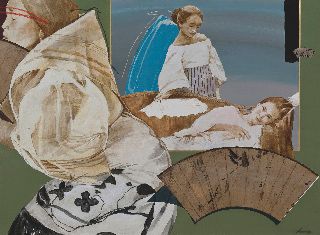
As with the works we saw in the first blog on BenCab, the fabric and the folds are an essential element to his works. But here the figures of the three women are carrying the story, not the fabric. The shape and symbolic importance of the fan to Filipino life is central. I can’t find an analysis of the work but to me the fan is soothing the women and soothing the troubled fabric. What do you think?
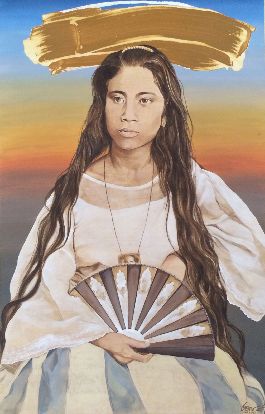
BenCab, living in London at the time of the rise of the artists David Hockney and Francis Bacon, was very much influenced by what they called the new spirit of painting, a return to figurative art. This style appealed to the perception of the world held by BenCab. I have read that he studied Japanese prints and was interested in how the Japanese were able to influence the Europeans. Hence the motif of the fan. What is fascinating is the tiny slice of a photo hanging from a chain around her neck. I wonder who the photo is of?
Larawan is a major theme that has recurred in BenCab’s paintings since the 1970s when he started the series. Based on colonial photography, the Larawan images hauntingly suggest parallel scenarios between the past and present. The artist’s strong suit – portraiture, the study of the human face and figure - emerges triumphantly in these veritable tableaux of our ancestors.3
This untitled work below from the Larawan Series (produced 1981) is done in acrylic on paper (68cm x 48cm).
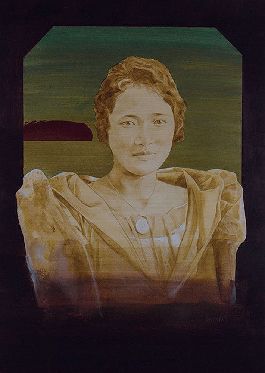
The elegant painting above is of an upper class Filipina beauty garbed in a baro't saya. The graphic quality of the artist’s fine etchings is evident. Suffused in the sepia tones of images gleaned from turn of the century photographs, and set against a starkly modernist background, this Larawan series work ranks highly in Ben Cab's oeuvres.4
Now we turn to some Mixed Media works by the versatile BenCab. This work (1993) of a mother and child is untitled (65cm x 50cm).
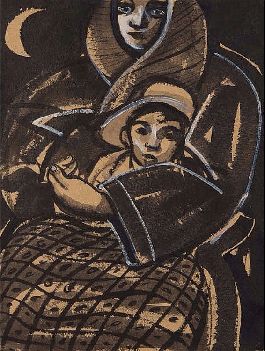
The image above of a night time ritual, a woman is perched beneath a crescent moon, her tender expression of ease congruent with the swift black strokes that envelop her and the child she cradles lovingly in her arms. Detailed with lines of charcoal, highlighted with contrasting white, and swathed within the comforting vastness of his mother’s gestural black ink, the child becomes the piece’s focal point in this atypical interpretation of National Artist BenCab’s mother and child.4
And I add that again we see the significance of the movement in the fabric so essential to the strength portrayed by the mother’s love and protection.
Below we turn to a different study where the figures seem to contradict each other.
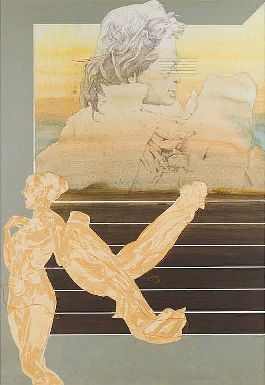
This mixed media work focuses on two figures depicted in two very different qualities. Created in a similar style to his ‘Larawan’ series which integrated imagery reminiscent of nostalgic photographs, this 1975 work evokes a sense of history by juxtaposing a desaturated palette with modernist techniques. On the top half we see the German composer Ludwig von Beethoven looking off past the frame to the right, superimposed over his eyes are thin lines reminiscent of a staff used to write musical notation. On the bottom, a woman’s silhouette stands in the nude, molded in the style of classical sculpture. Tying both together is the use of textile—the drapery of which BenCab had been exploring since the early 70s while living in London. Cid Reyes notes of his work with drapery during this period “the light that filters through the fabric becomes not only a visual but also a sensorial experience.” BenCab’s dexterity in the depiction of the behavior of textile has proven to be one of his most iconic themes. His skill in both academic and modernist art—and the amalgamation of styles—has proven to be, and continues to be, National Artist’s greatest stylistic strength. 4
And now to one of BenCab's bronze figures.
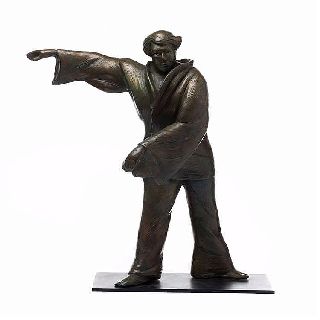
Sabel has been the muse of BenCab for several decades, finding different renditions over the years. The graceful movement in her clothes allow the artist to show various movements, even when cast in the unmoving brass.
The figure is cast in brass, and brings Sabel to life with this depiction of a swathed lady in three dimensional form. While working with a rigid medium, the artist manipulates gravity in the gracefulness of her stance and the delicate molding of the kimono-like garment draping loosely from her body.4
Here is a further selection of works by BenCan demonstrating the versatility of BenCab.
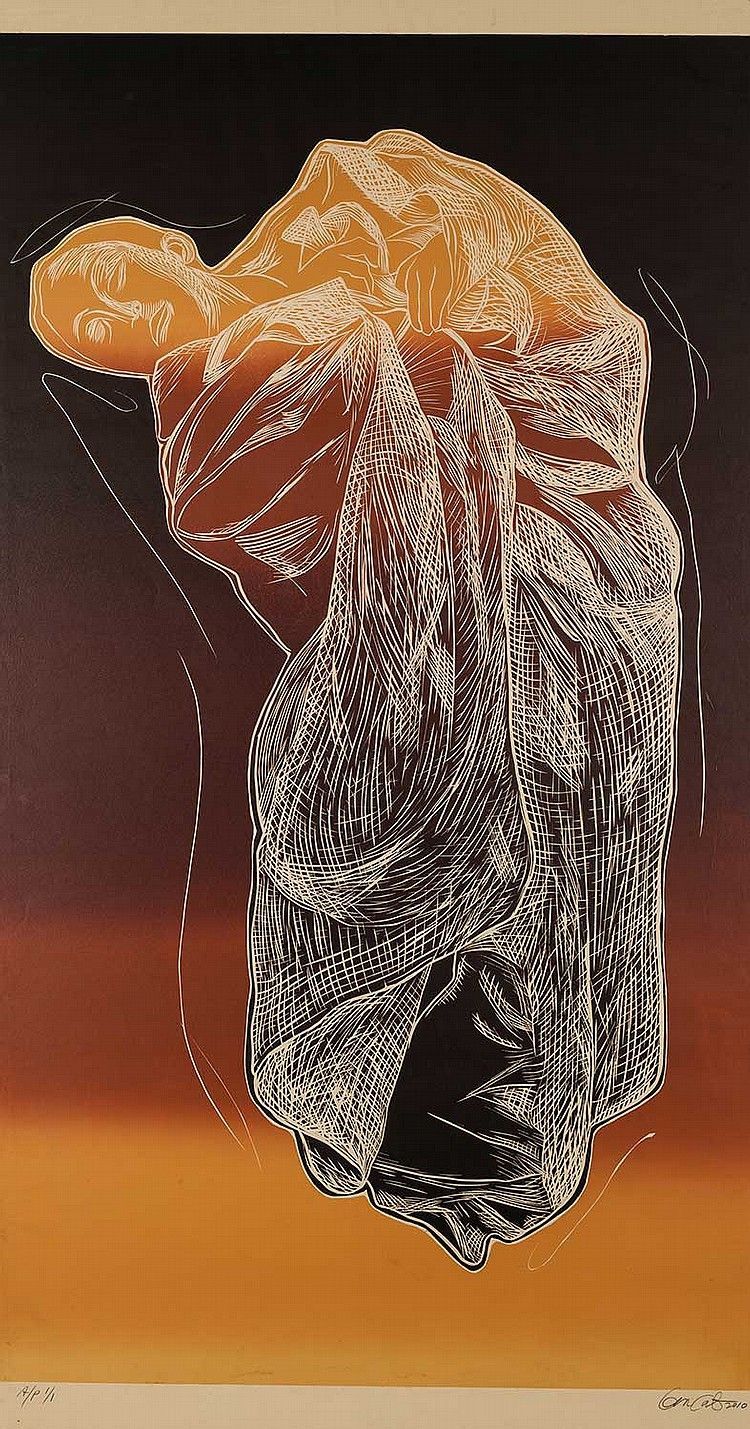
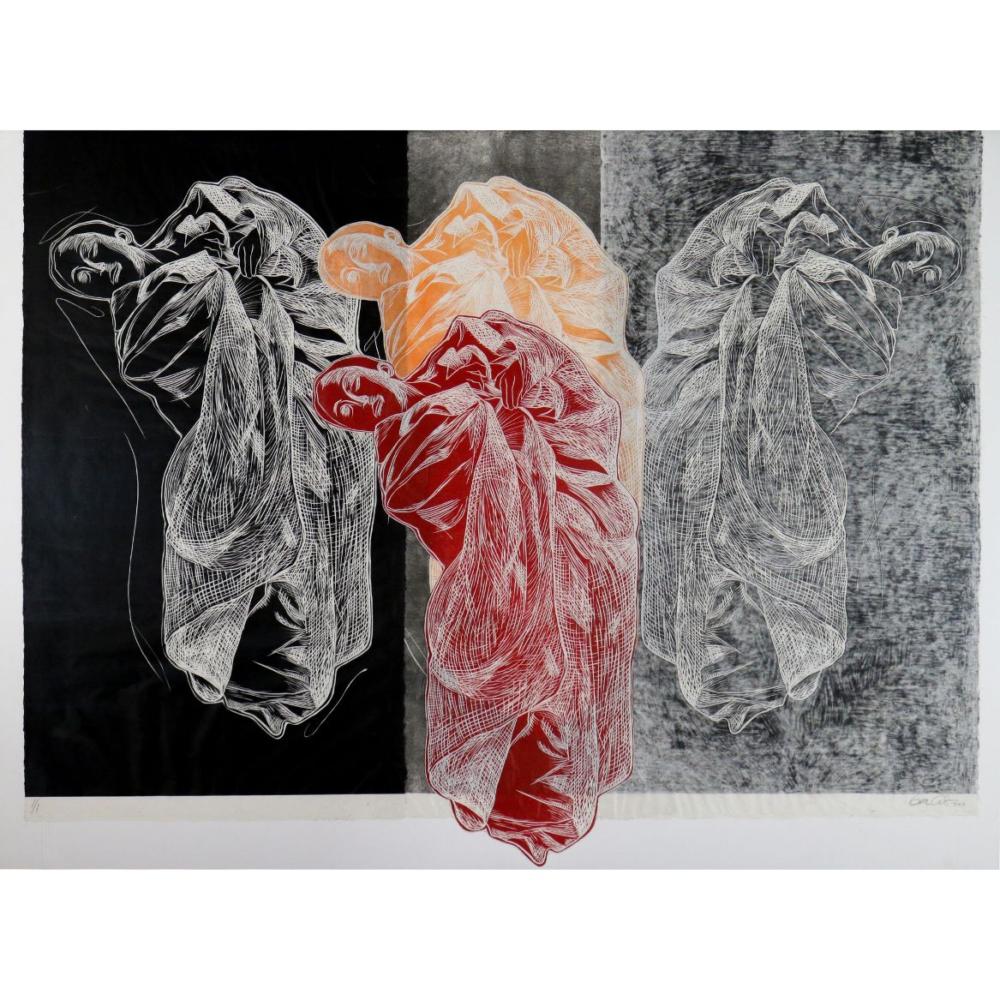
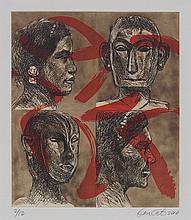
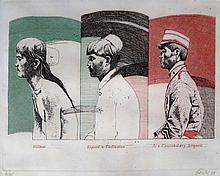
When the 1990 Luzon earthquake struck, BenCab and the BAG (Baguio Arts Guild) helped out by instituting programs such as the ArtAid workshop for traumatized children, and a fund-raising art auction they titled "Artquake." Bencab was elected president of the guild the following year.
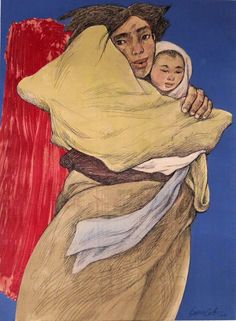
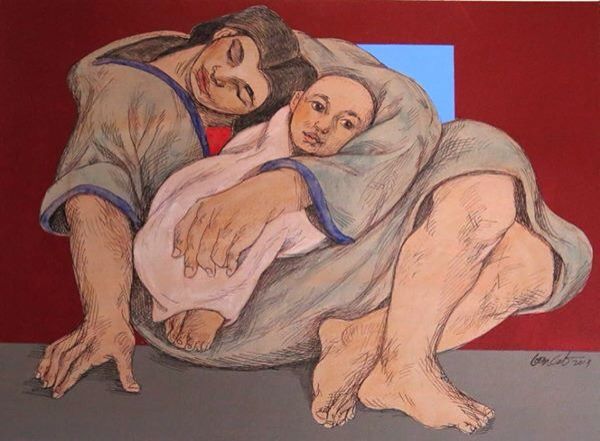
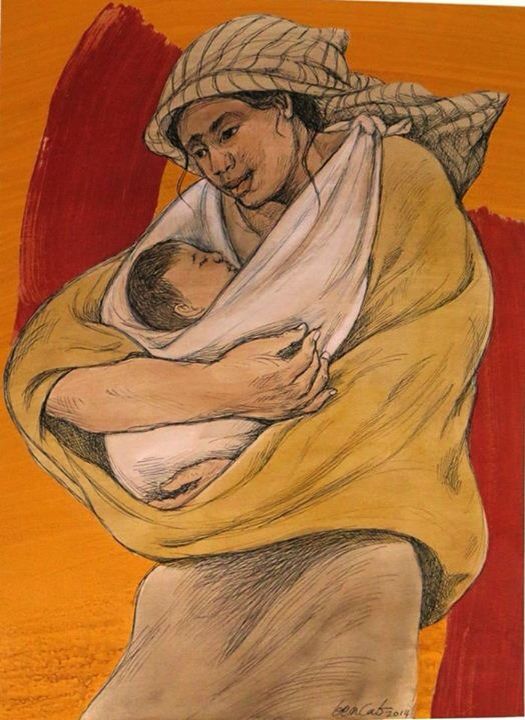
Later in the 1990s, BenCab's input was a critical element in the creation of Tam-awan Village, "a refuge for local artists who desire a nurturing environment in which to develop their talents, and a community for all those who wish to take part in the harmonious fusion of art, culture, environment, and history."
BenCab also exhibited considerably during the last decade of the Millennium, also reaping many accolades. Among the most prominent of the many awards received by BenCab during this period was the Gawad CCP Para sa Sining (Cultural Center of the Philippines Award for the Arts) in 1992.8
If you would like to read more about BenCab and his life Click Here.
Where to next in our art adventure? As I’m in Central Victoria at the moment, watching cycling races and sketching in between events, I think I will take a look at Wheel Art for a bit of a change.
Credit:
(1) artnet.com (2) pinoyadventurista.com (3) bencabmuseum.org
(4) invaluable.com (5)pinterest.com (6) pinterest.co.uk (7)pinterest.ch (8)artodyssey1.blogspot.com
